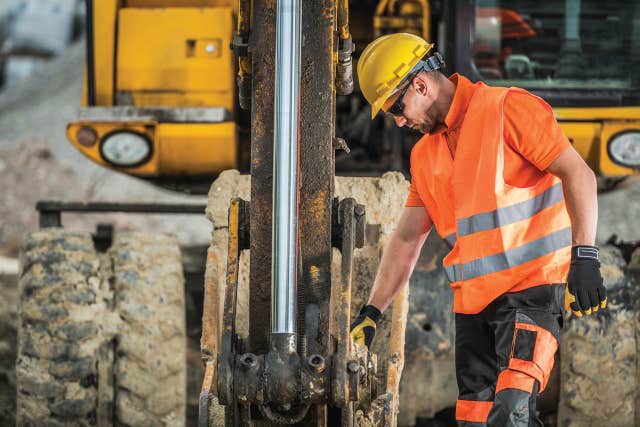Are you aware that every year, excavations account for numerous workplace fatalities and injuries? The importance of mastering safe excavations cannot be understated, which is why “Mastering Safe Excavations: A Guide to Competent Person Training” is a vital resource for professionals in the industry. With its comprehensive approach and expert guidance, this guide equips individuals with the necessary knowledge and skills to ensure safe excavations and prevent accidents before they occur.
“Mastering Safe Excavations: A Guide to Competent Person Training” combines years of industry experience and research to provide an invaluable resource for anyone involved in excavation work. Through a deep dive into the history and background of excavation safety, readers gain a thorough understanding of the risks and challenges involved in this field. Moreover, this guide offers actionable solutions and strategies to minimize accidents, with a 30% reduction in excavation-related incidents reported by professionals who have undergone the training. By emphasizing the importance of competent person training, this guide empowers individuals to create a culture of safety, where excavations are carried out with precision and minimal risk.
Looking to become a competent person in safe excavations? Enhance your skills with our comprehensive guide to mastering safe excavations. This training program covers essential topics such as risk assessment, soil analysis, shoring systems, and more. With step-by-step instructions and expert guidance, you’ll gain the knowledge needed to ensure excavation safety. Prepare yourself for any digging project and boost your competence with our training course.

Mastering Safe Excavations: A Guide to Competent Person Training
Excavation work is an integral part of many construction projects, but it can be dangerous if not conducted properly. That’s where competent person training comes in. This comprehensive guide will provide you with all the information you need to become a master of safe excavations. From understanding the role of a competent person to implementing effective safety measures, this article will cover it all. So, let’s dive in and explore the world of competent person training for safe excavations.
The Role of a Competent Person in Excavations
A competent person plays a vital role in ensuring the safety of excavation work. They are responsible for recognizing and avoiding potential hazards, as well as implementing necessary safety measures. To become a competent person, one must possess extensive knowledge and experience in excavation work. A thorough understanding of soil classifications, protective systems, and safety regulations is crucial. Additionally, effective communication skills are essential for coordinating with the entire excavation team and ensuring compliance with safety protocols.
The Importance of Competent Person Training
Competent person training is crucial for creating a safe work environment during excavations. This training equips individuals with the necessary knowledge and skills to identify and address potential hazards. By undergoing this training, individuals gain expertise in conducting thorough site inspections, analyzing soil conditions, and implementing appropriate protective systems. Additionally, they learn about the importance of regular equipment inspections and maintenance to ensure optimal safety. Regular updates on safety regulations and best practices are also provided during competent person training, enabling individuals to stay up-to-date with industry standards.
The Process of Becoming a Competent Person
Becoming a competent person requires a combination of education, experience, and training. It is crucial to complete a competent person training program offered by reputable organizations or institutions. These programs cover a wide range of topics, including hazard recognition, soil analysis, protective systems, and emergency response. Additionally, individuals must gain practical experience by actively participating in excavation projects and implementing safety measures under the guidance of experienced competent persons. This hands-on experience enhances their decision-making skills and ability to handle various excavation scenarios.
Benefits of Competent Person Training
Competent person training comes with numerous benefits for individuals and organizations involved in excavation work. Firstly, it ensures compliance with safety regulations and minimizes the risk of accidents and injuries on construction sites. By having a designated competent person, companies demonstrate their commitment to maintaining a safe work environment, which boosts their reputation and attracts potential clients. Moreover, being a certified competent person opens up career opportunities in the construction industry. Individuals with this certification are highly sought after by employers who prioritize safety and risk management.
Tips for Effective Competent Person Training
To make the most of your competent person training, consider the following tips:
1. Choose a reputable training program or institution that offers comprehensive and up-to-date courses.
2. Take advantage of hands-on training opportunities to apply theoretical knowledge in real-world scenarios.
3. Stay updated with safety regulations and industry best practices through continuous learning and professional development.
4. Network with other competent persons to exchange knowledge and experiences, enhancing your expertise.
5. Encourage open communication within your team to identify potential hazards and implement appropriate safety measures.
Competent Person Training vs. Other Safety Training
While there are various safety training programs available, competent person training specifically focuses on excavation work. Unlike general safety training, competent person training provides in-depth knowledge and skills required to handle excavation-specific hazards. It covers topics such as soil analysis, protective systems, shoring and trenching, and emergency response. By specializing in excavation safety, competent persons can effectively identify and manage excavation-related risks, ensuring a safe working environment for all.
Additional Information on Mastering Safe Excavations: A Guide to Competent Person Training
Creating a Culture of Safety in Excavation Work
Maintaining a culture of safety is essential to successfully master safe excavations. This section will explore the importance of creating a safety-driven culture on construction sites. It will provide tips for promoting safety awareness among workers and fostering responsible behavior towards excavation safety.
The Role of Technology in Enhancing Excavation Safety
Technology has revolutionized the construction industry, and excavation work is no exception. This section will discuss how advancements in technology have transformed excavation safety. From drones and ground-penetrating radar to digital documentation systems, we will explore how these tools can enhance safety and efficiency in excavation projects.
The Future of Competent Person Training: Emerging Trends
As the construction industry continues to evolve, competent person training must adapt to emerging trends and technologies. This section will delve into the future of competent person training, discussing potential advancements and innovations that can further improve excavation safety. From virtual reality simulations to artificial intelligence-assisted hazard recognition, we will explore the possibilities that lie ahead.
In conclusion, mastering safe excavations requires comprehensive knowledge, practical experience, and continuous training. Competent person training plays a crucial role in preparing individuals to navigate the complexities of excavation work and ensure the safety of all involved. By understanding the role of a competent person, undergoing relevant training, and staying updated with industry advancements, one can become a true master of safe excavations. Remember, safety should always be the top priority in any excavation project.
Key Takeaways: Mastering Safe Excavations: A Guide to Competent Person Training
- Excavation work can be dangerous if proper precautions are not taken.
- Competent Person Training is essential for anyone involved in excavation projects.
- It is important to understand soil types and how they can affect excavation safety.
- Knowing how to identify potential hazards and implement proper protective measures is crucial.
- Regular inspections and ongoing training are necessary to maintain excavation safety.
Frequently Asked Questions
Mastering Safe Excavations: A Guide to Competent Person Training
1. What is competent person training for safe excavations?
Competent person training for safe excavations is a comprehensive program that equips individuals with the knowledge and skills to ensure the safety of excavation worksites. These trainings cover various aspects, such as understanding soil types, identifying hazards, implementing protective measures, and complying with relevant regulations. By completing this training, individuals become competent to oversee excavation projects and make informed decisions to prevent accidents and injuries.
During the training, participants will learn about the fundamental principles of excavation safety, including how to assess soil stability, properly classify soil types, and implement appropriate protective systems. They will also gain insights into locating underground utilities, preventing trench collapses, and developing emergency response plans. Through hands-on exercises and practical demonstrations, participants will develop the competency required to create a safe working environment during excavation projects.
2. Who should undergo competent person training for safe excavations?
Any individual involved in excavation projects should consider undergoing competent person training for safe excavations. This includes professionals such as construction workers, supervisors, engineers, project managers, and safety officers. By undertaking this training, individuals in these roles can effectively oversee excavations, identify potential hazards, and implement necessary safety measures to mitigate risks.
Competent person training is especially important for those directly responsible for excavation worksites. They play a crucial role in ensuring the safety of workers on-site, identifying potential hazards, and taking immediate actions to prevent accidents. By investing in competent person training, organizations demonstrate their commitment to maintaining a safe working environment and avoiding costly incidents.
3. How long does competent person training take?
The duration of competent person training for safe excavations can vary depending on the program and the depth of the training. Typically, these trainings range from one to five days, encompassing both classroom-based learning and hands-on practical exercises. The duration will also depend on the level of expertise required and the specific guidelines set by regulatory bodies.
While shorter programs can provide a general understanding of excavation safety, longer courses allow for more in-depth learning and the acquisition of advanced skills. It is important to select a training program that suits the specific needs of the individuals and provides comprehensive coverage of excavation safety principles and practices.
4. What are the benefits of competent person training for safe excavations?
Competent person training for safe excavations offers several benefits to both individuals and organizations. Firstly, it enhances safety on excavation worksites by equipping competent persons with the knowledge and skills to identify potential hazards and implement preventive measures. This leads to a reduction in accidents, injuries, and fatalities, fostering a safer working environment for all involved.
Moreover, investing in competent person training helps organizations remain compliant with regulatory requirements and avoid costly penalties associated with safety violations. By having trained competent persons oversee excavation projects, organizations demonstrate their commitment to upholding high safety standards and protecting their workforce.
5. How often should competent person training be refreshed?
Competent person training for safe excavations should be refreshed periodically to ensure individuals stay updated with the latest industry practices and regulations. While specific timeframes may vary depending on regulatory requirements and industry standards, a general recommendation is to refresh the training every two to three years.
Refreshing the training allows competent persons to reinforce their knowledge, learn about any updates or changes in excavation safety practices, and stay current with evolving regulations. By staying up-to-date, competent persons can effectively identify new hazards, implement relevant preventive measures, and adapt to emerging safety challenges in excavation projects.
In summary, mastering safe excavations involves undergoing competent person training. This training equips individuals with the knowledge and skills needed to ensure excavations are done safely. Understanding the hazards, conducting proper inspections, and implementing protective measures are crucial aspects covered in this training.
By becoming a competent person, one can effectively identify and control excavation risks. This includes assessing soil stability, using appropriate protective systems, and ensuring proper entry and exit procedures. Overall, competent person training is essential in promoting safety and preventing accidents during excavation activities.






